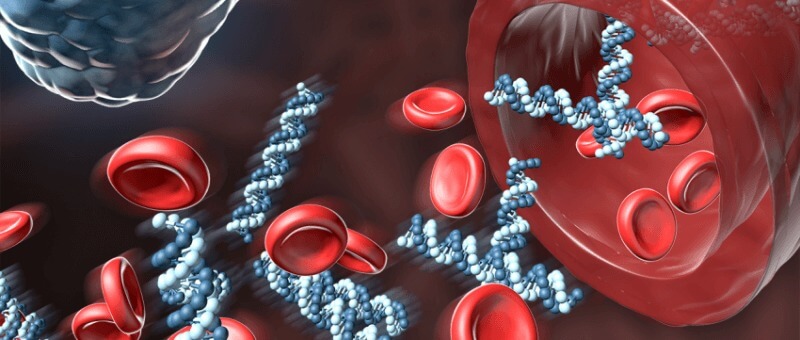The chances are you’ve seen a headline over the last month along the lines of “Universal cancer test breakthrough”. But what is the test and are we really on the brink of a “one test fits all” for cancer diagnosis?
The majority of our DNA is contained within a packet in our cells called the nucleus. When cells die the DNA is released into the blood stream. This is “cell-free” DNA.
Professor Rossa Chiu is a Pathologist educated at University of Queensland and now working in Hong Kong. She previously used this DNA to develop a minimally invasive way to test unborn babies for conditions such as Down Syndrome. Chiu and her team are now working on a similar method to detect cell-free DNA from tumour cells.
Cancer cells also contain DNA which is released into the blood stream when the cell dies. The DNA is “barcoded” in such a way that we can identify which organ it came from. Professor Chiu’s team have used this to develop a blood test that can pinpoint the exact organ in which the cancer may be lurking.
The approach is known as ‘DNA tissue mapping’ and it takes less than a week from a single 10mL tube of blood. This means that it is generally safer and less painful than traditional cancer biopsies.
DNA tissue mapping is still in the early stages. To date, abnormal DNA released from liver, bone marrow and placenta can be accurately identified. Chui’s team is focussing on colorectal cancer next.
The next step is large-scale human trials of the technique. There are a couple of potential limitations, however.
The first is that while DNA tissue mapping can verify the type of cancer, it may not be able to indicate the severity. This could result in aggressive treatment for cancers that would ultimately be non-threatening. Many cancer therapies are very toxic and are limited to those for whom the benefits of the drugs outweigh the severe side effects.
The second is whilst we may be able to detect incredibly tiny tumours with this technology, our ability to treat them at this stage is lagging.
Dr Melody Caramins, head of The Royal College of Pathologists Australasia’s Genetics Advisory Board, explains:
“The technique developed by Professor Chiu and her team can pick up DNA from a tumour as small as 1mm but current imaging techniques cannot visualise a tumour smaller than 5mm.
So theoretically this new technique could find cancer DNA present but we would have no way of validating the finding or targeting treatment effectively until we had waited long enough for the tumour to grow
There’s so much active research going on at the moment to turn this into effective treatment and better outcomes for cancer patients. It’s a really exciting time.”

